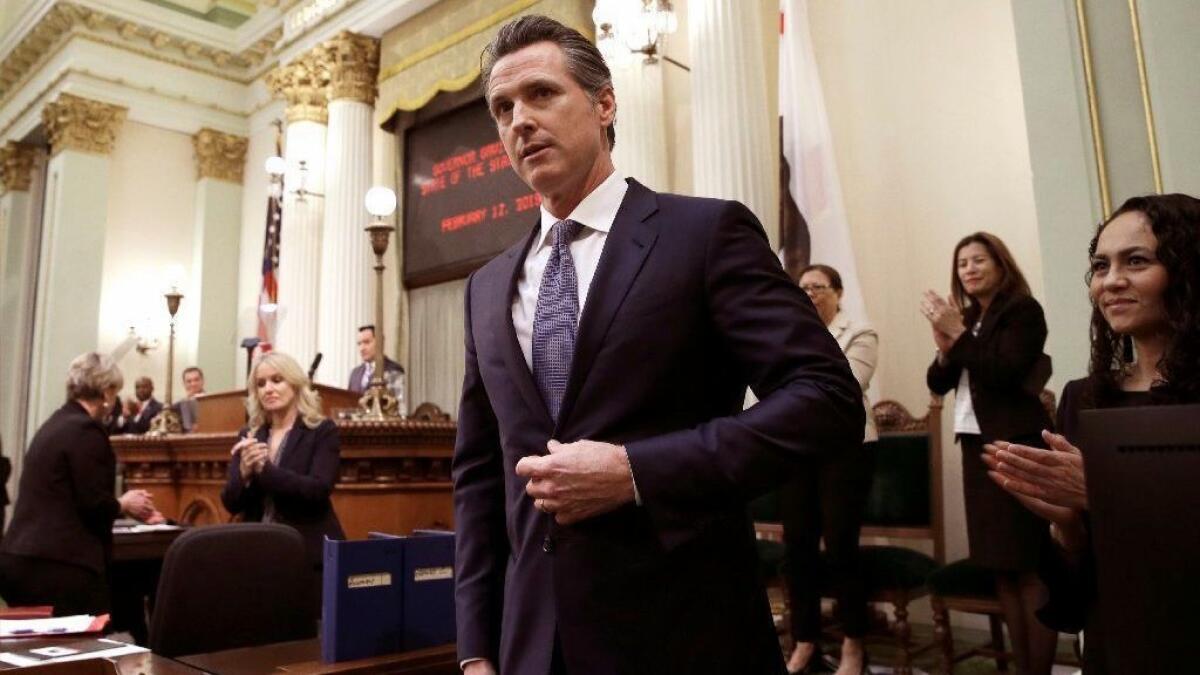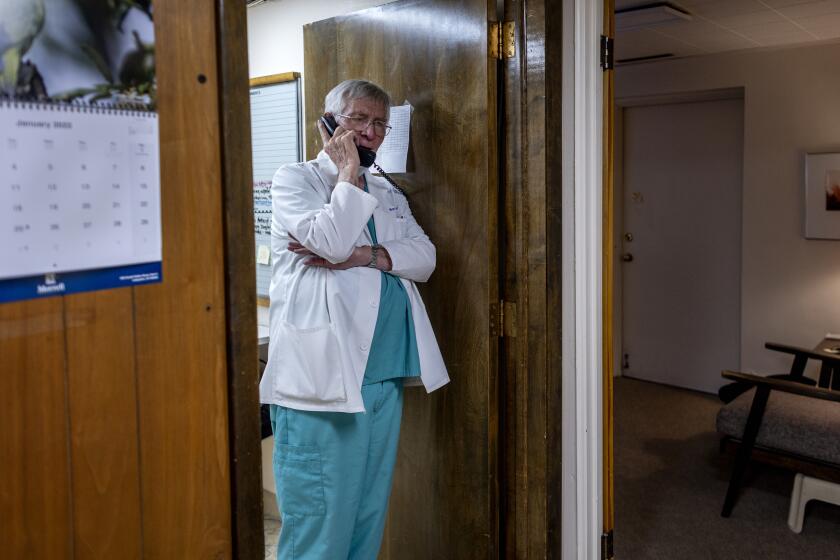Readers React: California’s bullet train is down, and readers are still kicking it

Among our letter writers who like to use California as a political punching bag (and there are more than a few), nothing has better reflected what they see as the state’s total dysfunction than the serially delayed, budget-exploding high-speed rail system. Now, with Gov. Gavin Newsom having announced in his first State of the State address that the bullet train, at least for the moment, will be dramatically scaled back from the long-envisioned link between Los Angeles and San Francisco to the 110-mile Central Valley segment already under construction, readers are not letting up with their criticism.
While the idea of a north-south bullet train has its defenders, as does the truncated Central Valley version, most of the few dozen readers who have written to us on this topic since Newsom made his announcement have either praised the governor or wondered why he did not completely halt construction.
The fate of high-speed rail in California may be uncertain, but this is not: With so much ink having already been spilled about this project since Proposition 1A passed in 2008, this will not be the last we’ll hear from readers about the bullet train.
James Regan of Carlsbad sums up the standard arguments against high-speed rail in California:
Bravo to Newsom for getting real about this project. For three reasons, the proposed high-speed rail system in California could never be successful.
First, the distance between Los Angeles and the San Francisco Bay Area is too great; second, the geological barriers are too severe; and third, the customer base is too small.
The revised proposal, to stick with a shorter line between Merced and Bakersfield, avoids the first two problems. But it’s pretty obvious there will never be enough paying customers to justify spending billions on that small Central Valley segment.
The entire boondoggle needs to be halted.
Los Alamitos residents Dan Schechter and Felice Sussman don’t want to throw good money after bad:
Newsom said that if we do not finish the bullet train, “we will have wasted billions of dollars with nothing but broken promises.”
This is a classic example of a sunk cost fallacy: a possibly irrational decision to pursue a wasteful project, simply to avoid stranding the sunk costs.
The real issue is whether the anticipated expenditures are justified by the anticipated benefits, without factoring in unrecoverable past expenditures. When will we see that analysis?
Hal Dale of Malibu believes the infrastructure does not exist to make a bullet train work:
Yes, the mass use of a bullet train in California could ease global warming, but it won’t appeal to potential riders until we build European-style city infrastructure. Compare a Parisian going to the Bundestag in Berlin with me going to a meeting in San Francisco.
The Parisian walks a quarter-mile to his Metro stop, then for less than 2 Euros reaches the East Paris train station, which has multiple fast trains to Berlin, whereupon another underground line takes him to his destination.
I, on the other hand, must drive at least 45 minutes to Union Station, pay at least $8 per day to park, hope that I can find one of the trips that fits my schedule, and then take a cab to my meeting in San Francisco.
Good infrastructure must exist before mass use of train travel can help us with climate change.
Raymond Johnson of Santa Monica wants a freeway upgrade:
Actually, there is a fast, reliable way to San Francisco, but it has been neglected. It was built in the 1970s but is now outdated. It is named the Interstate 5.
Even on the 5, a driver can get from San Francisco to Los Angeles in less than six hours. If the 5 is expanded from its current two lanes in each direction to four, it would have two lanes for cars and two for trucks.
Plus, we already own the land.
Follow the Opinion section on Twitter @latimesopinion and Facebook
More to Read
A cure for the common opinion
Get thought-provoking perspectives with our weekly newsletter.
You may occasionally receive promotional content from the Los Angeles Times.











